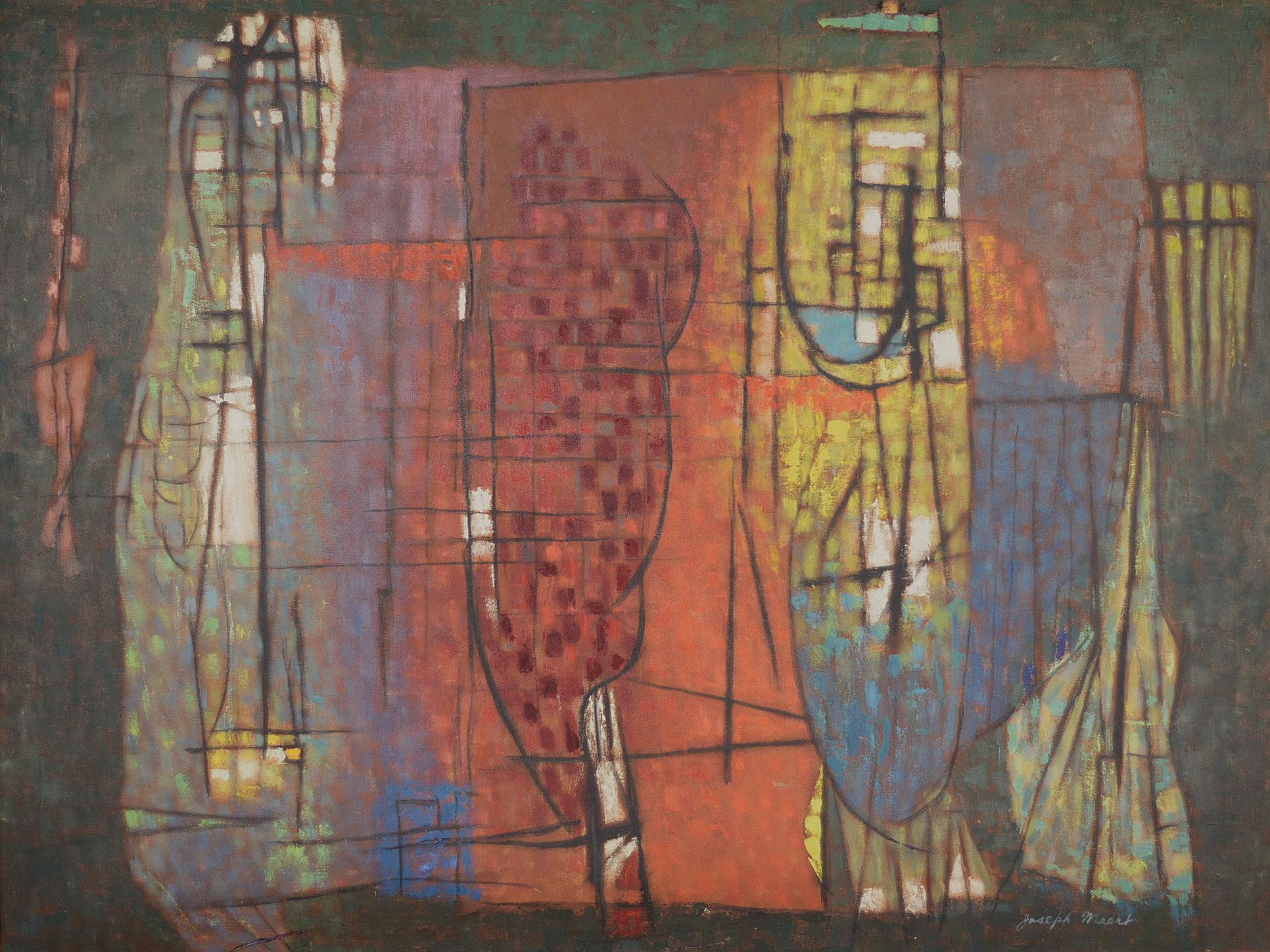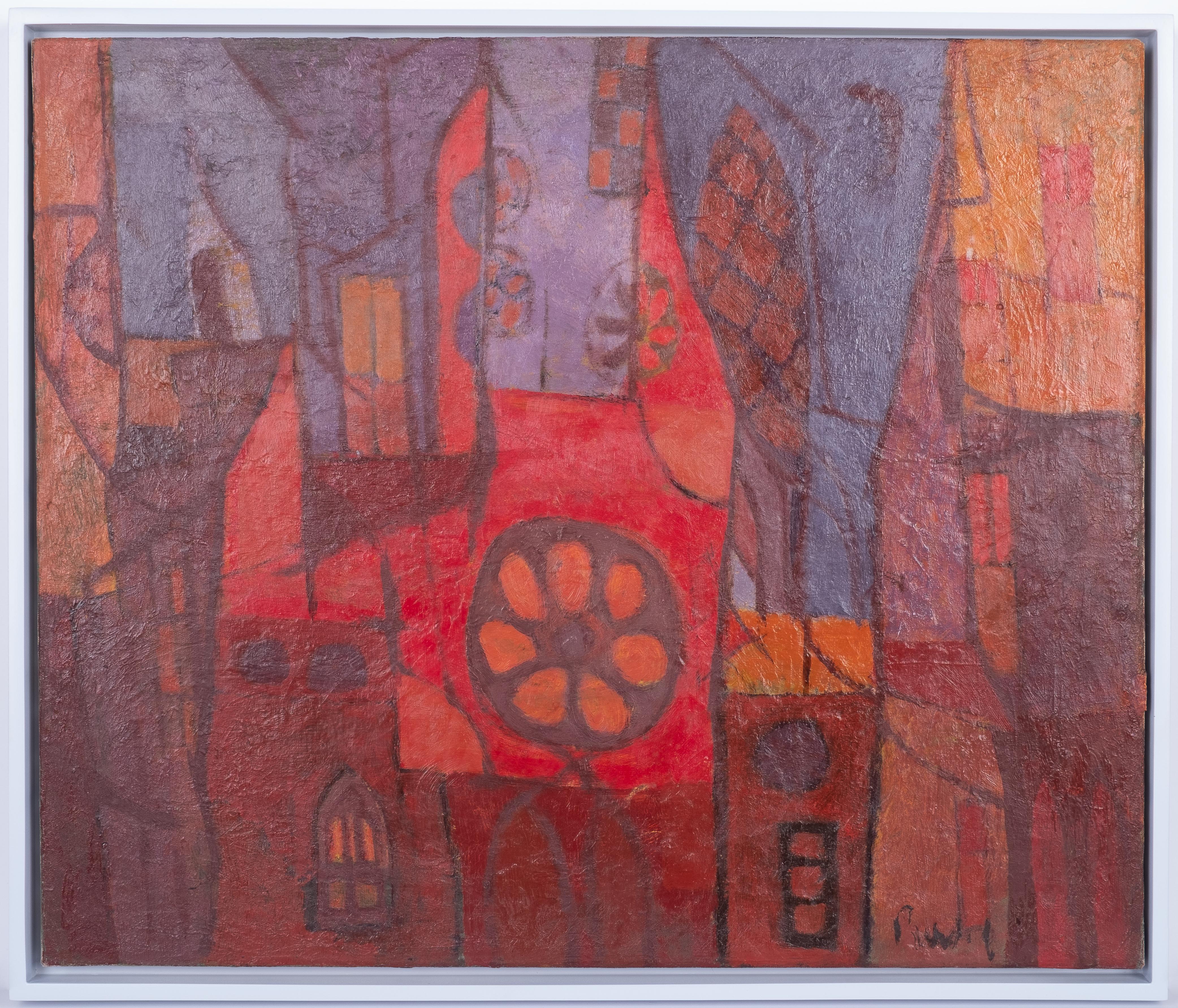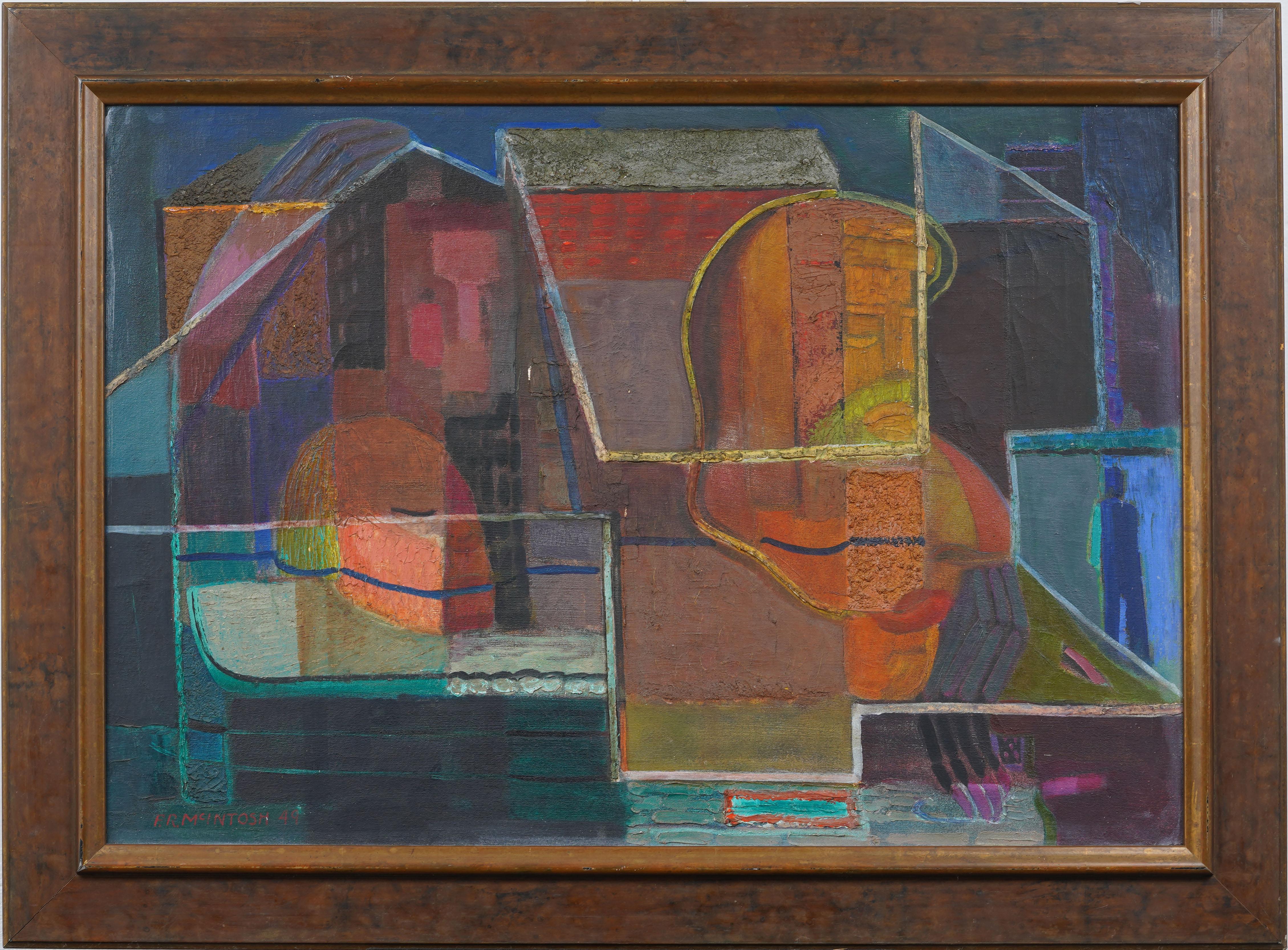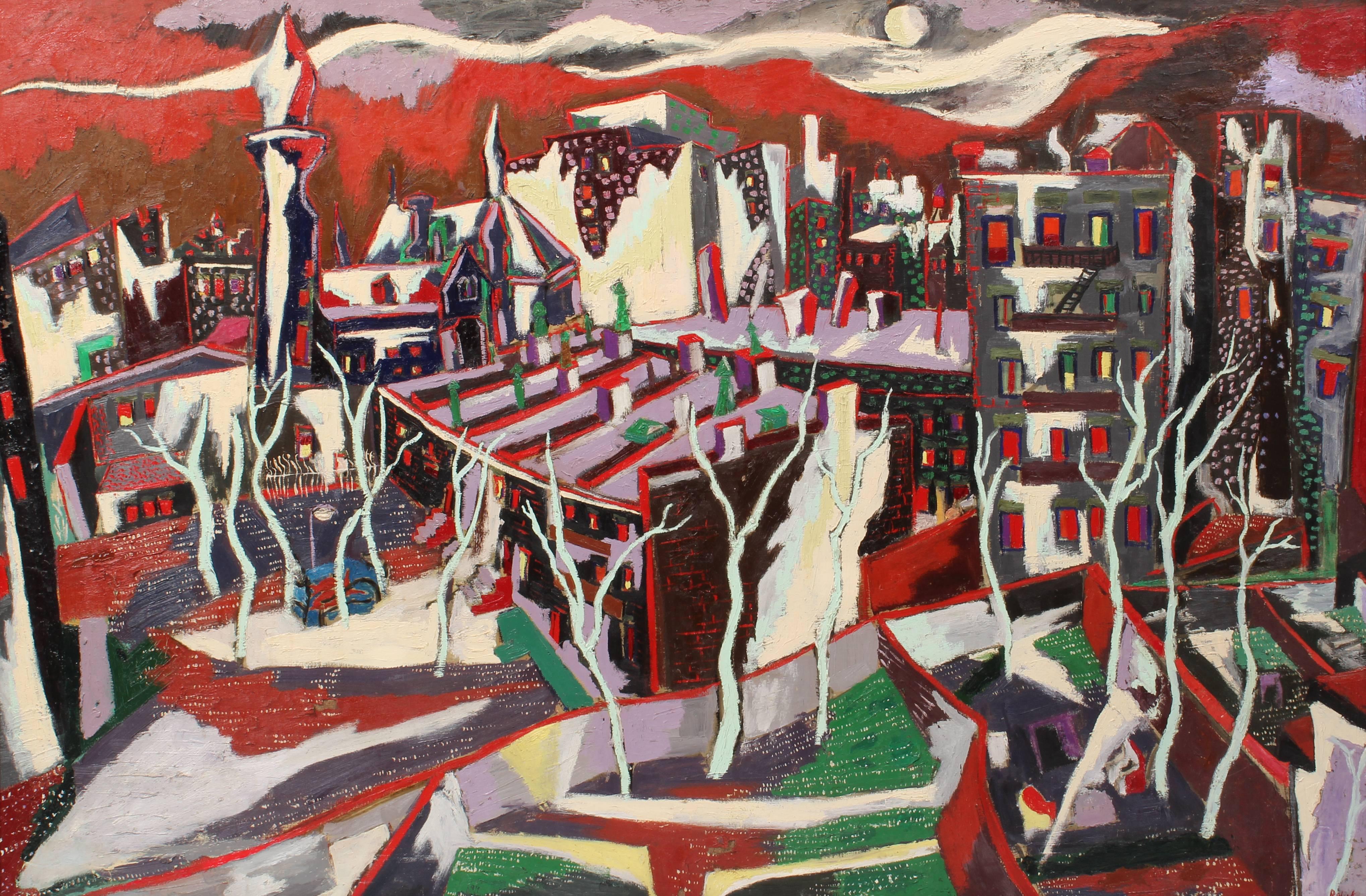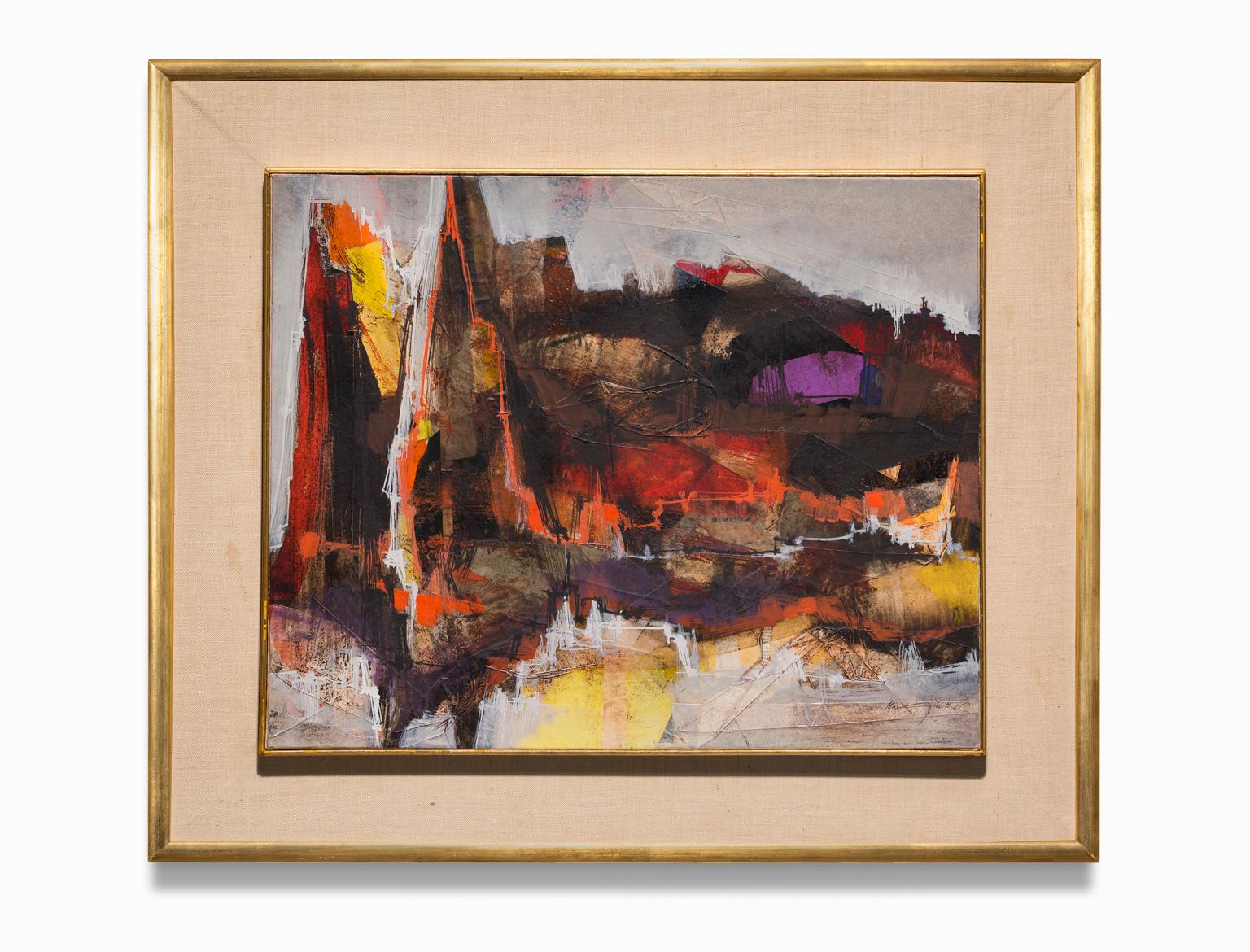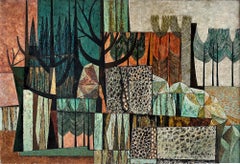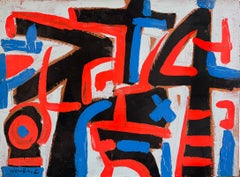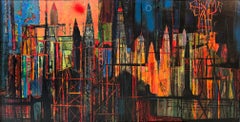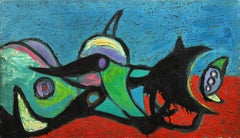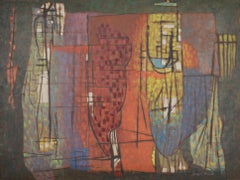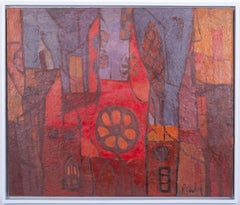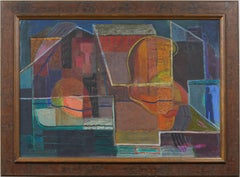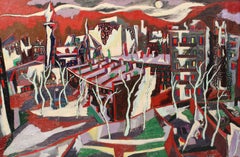Items Similar to City Scape Abstract Expressionist Composition -Jackson Pollack Friend
Want more images or videos?
Request additional images or videos from the seller
1 of 18
Joseph MeertCity Scape Abstract Expressionist Composition -Jackson Pollack Friend1948
1948
$9,500
£7,237.42
€8,259.61
CA$13,349.75
A$14,548.88
CHF 7,704.26
MX$174,747.33
NOK 97,537.60
SEK 89,676.23
DKK 61,690.13
About the Item
The fame, notoriety, and monetary value of an artist's work in today's market are not based on one's talent and vision. Factors such as marketing and media momentum play a defining role. Such is the case of Joseph Meert. The work in question is titled " Lone Tower" 1948. It was conceived and executed by overlooked and underrated visionary modernist/abstract expressionist artist Joseph Meert a student of Thomas Hart Benton and a close friend of Jackson Pollack. He was doing abstract work in the heyday of abstract expressionism and was widely exhibited in galleries and museums. Today, he is lesser known because the media spotlight is almost exclusively on contemporary artists - many of whom did work similarly to what Meert pioneered 75 years ago. Meert may have saved Jackson Pollock's life. On a sub-zero winter night in 1943 or 1944, Pollack visited Meert at his New York / Cooper Square apartment; however, Pollock passed out drunk in a snowdrift and would have frozen to death if Meert had not discovered him. Signed and dated 1948 lower right, Signed on verso, Joseph Meert, 10 Cooper Square, Title - " Lone Tower, Medius Gouache, $45. Unframed on thin boardColor will vary with different lighting.
- Creator:Joseph Meert (1905 - 1990, American, Belgian)
- Creation Year:1948
- Dimensions:Height: 20 in (50.8 cm)Width: 24 in (60.96 cm)Depth: 1 in (2.54 cm)
- Medium:
- Movement & Style:
- Period:
- Condition:some slight fading. Extreme corners have some minor issues. on thin board unframed.
- Gallery Location:Miami, FL
- Reference Number:1stDibs: LU385313117172
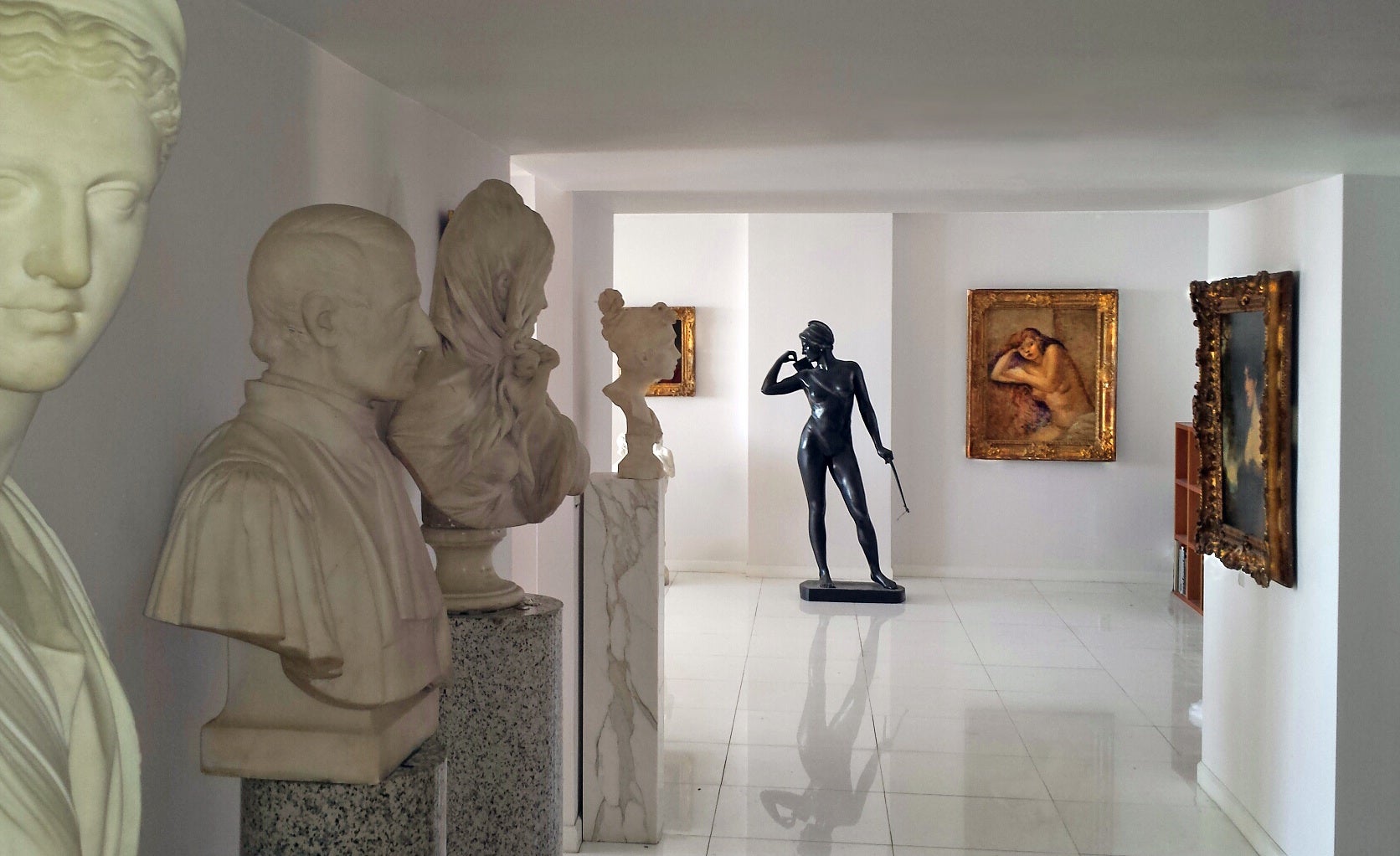
About the Seller
5.0
Vetted Professional Seller
Every seller passes strict standards for authenticity and reliability
Established in 2005
1stDibs seller since 2016
119 sales on 1stDibs
Typical response time: 1 hour
- ShippingRetrieving quote...Shipping from: Miami, FL
- Return Policy
More From This Seller
View AllLandscape Abstraction - Mid-Century - Twenty Paintings in One
Located in Miami, FL
When it comes to abstract painting, the creation date is important. At the height of Abstraction Expressionism, overlooked Academic Artist John Atherton created a wonderfully complex painting that embodies many of the characteristics of what was going on in Mid-Century American Art. The work is simultaneously abstract as it is representational. Like a Bento Box, it's divided into sections by dividers. On close inspection, each section stands on it's own as a beautiful mini-painting yet coalesces as part of the whole. From a distance, it is eye-pleasing, but as the view gets closer and closer, new structures and details gloriously reveal themselves. This is an important painting and not unlike the work of Joaquín Torres-García. It was done in the last year of the artist's life. Signed lower right. Canvas is relined. Framed size: 30 x 41.25. The work is best viewed with top gallery lights to bring out color.
Color will look different under different lighting conditions. Atherton exhibited at the famous Julien Levy Gallery in New York and his fine art is mainly associated with Magic Realism. He participated in the seminal 1943 Museum of Modern Art exhibition, American Realists and Magic Realists. The Museum of Modern Art has 4 Atherton paintings in its collection. As an Illustrator, Atherton did covers for the Saturday Evening Post, Fortune and Holiday Magazine...
Category
1950s Abstract Expressionist Abstract Paintings
Materials
Canvas, Oil
Abstract Expressionist "Forms Divide" Like Franz Kline
By Emerson Woelffer
Located in Miami, FL
It's 1951. Who was doing painting like this? Franz Kline, Arshile Gorky, Jackson Pollock, Mark Rothko, Willem de Kooning, Adolph Gottlieb, Clyfford Still, Robert Motherwell, Lee Kra...
Category
1950s Abstract Expressionist Abstract Paintings
Materials
Masonite, Acrylic
Mid-Century Rocket Ship Cityscape Abstract Skyline
By Edward Arthur Anderson
Located in Miami, FL
In the present work, the artist arranges a series of rockets and support structures in a row to mimic the New York City skyline under hyper-dramatic lighting conditions. It embodies ...
Category
1950s American Modern Abstract Paintings
Materials
Masonite, Oil
Biomorphic Forms - Early Abstract Expressionist - like Arshile Gorky
By Emerson Woelffer
Located in Miami, FL
It's 1945. What artists were making totally abstract, non-objective paintings like this? Work characterized by organic forms and flattened picture planes, with solid bold colors dr...
Category
1940s Abstract Expressionist Abstract Paintings
Materials
Canvas, Found Objects, Oil
Storm Composition #3
By Abraham Rattner
Located in Miami, FL
An early example of Abstract Expressionism executed in 1955 during the movement's heyday and it's period of peak inventiveness. However, this work is still rooted in representation. The dark area the runs along the base of the picture is the ground and to the left, right and center there are black structures that represent trees. The work is very tactile and is composed of globs of paint that grow out from the surface and form a thick impasto. Rich vibrant saturated blues, reds and oranges create optical drama. The work look better in person. frame: 29 x 39 1/2 inches , Provenance: Kennedy Galleries
The Currier Gallery of Art...
Category
1950s Abstract Expressionist Abstract Paintings
Materials
Oil
Early Abstract Expressionist - Black Mountain College Teacher, Franz Kline
By Emerson Woelffer
Located in Miami, FL
With Abstract Expressionist painting, one could argue that the earlier, the more historically important. This stunning non-objective action painting is characterized by vast swaths o...
Category
1950s Abstract Expressionist Abstract Paintings
Materials
Oil, Fiberboard
You May Also Like
Transition oil painting by Joseph Meert
By Joseph Meert
Located in Hudson, NY
Artist Joseph Meert studied at the Kansas City Art Institute and later the Art Students League of New York after immigrating to the United States as a ...
Category
Mid-20th Century Abstract Abstract Paintings
Materials
Canvas, Oil
City Abstraction, mid modern abstract oil painting Circa 1950’s
By Donald Roy Purdy
Located in New York, NY
In the 1950’s Donald Purdy embraced an abstract style of painting which was pervasive at the time. This painting is a perfect compliment to a room with mide modern furniture. In Ci...
Category
Mid-20th Century Abstract Expressionist Figurative Paintings
Materials
Canvas, Oil
"Metropolitan Abstraction" Signed Mid Century Cubist Architectural Abstraction
Located in Buffalo, NY
Antique American abstract cubist street scene oil painting. Oil on board. Framed. Signed. Measuring: 31 by 42 inches overall, and 25 by 36 painting alone. In excellent original con...
Category
1940s Modern Abstract Paintings
Materials
Oil, Board
Modernist Cityscape
By Esther Rollick
Located in Buffalo, NY
An original modernist oil painting by American female artist Esther Rollick.
Category
1940s American Modern Landscape Paintings
Materials
Canvas, Oil
Modern City Scene
Located in Sheffield, MA
David Redpath Michie
Scottish, 1928-2015
Modern City Scene
Oil on board
30 by 40 in, w/ frame 33 ¼ by 43 ¼ in
Signed lower right, dated 1955
Son of the painter Anne Redpath, David ...
Category
1950s Abstract Expressionist Abstract Paintings
Materials
Oil
Max Gunther Abstract Cityscape, Acrylic Collage on Canvas
By Max Gunther
Located in Detroit, MI
SALE ONE WEEK ONLY
This abstract acrylic work by Max Günther is an exquisite example of his abstract cityscape work. A preferred subject of Günther's, his work took cityscape shapes...
Category
1960s Abstract Abstract Paintings
Materials
Canvas, Acrylic
More Ways To Browse
Thomas Benton Hart
City Scape Paintings
Sub Zero Used
Josef Albers Painting
Kelly Rossetti
Korean American Artist
Muted Abstract Art
Paintings 1970s Acrylic
Save Me
72 Inches Paintings
Abstract Painting 36x48
African American Abstract Art
Birds On A Wire
Blue Jay Painting
Camellia Painting
Gillian Ayres
Large Vertical Paintings
Rhode Island Painting
